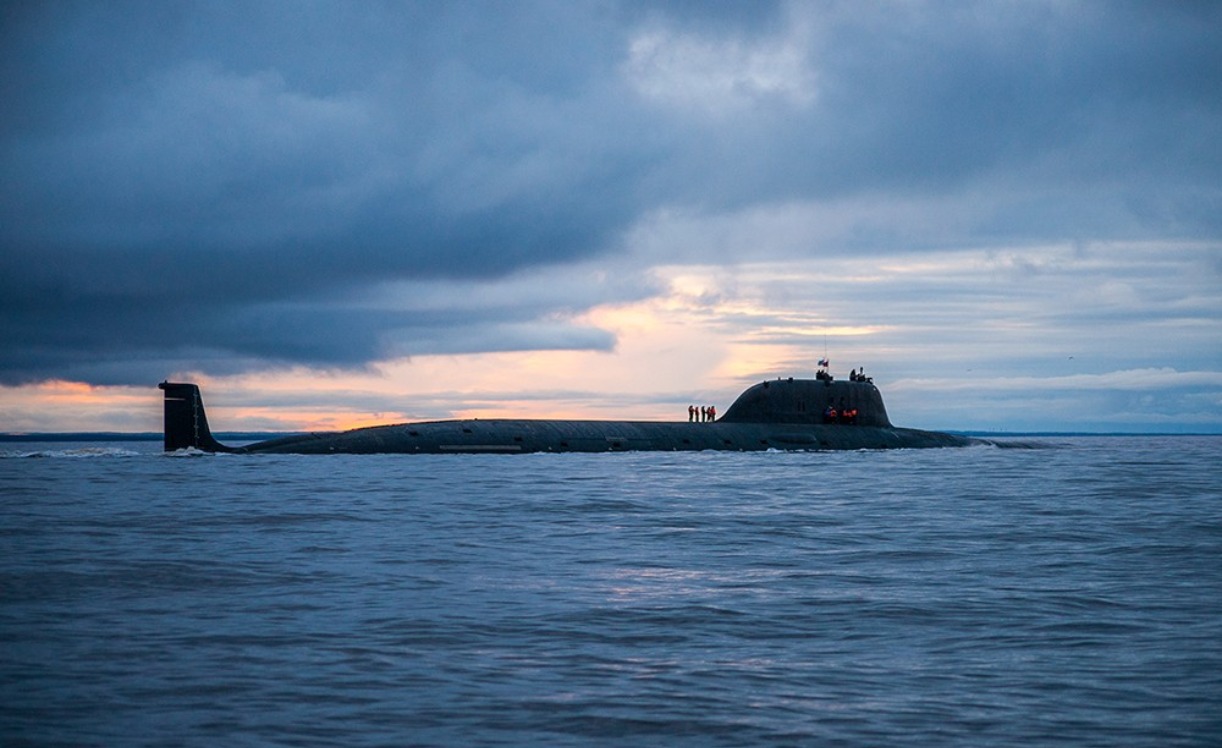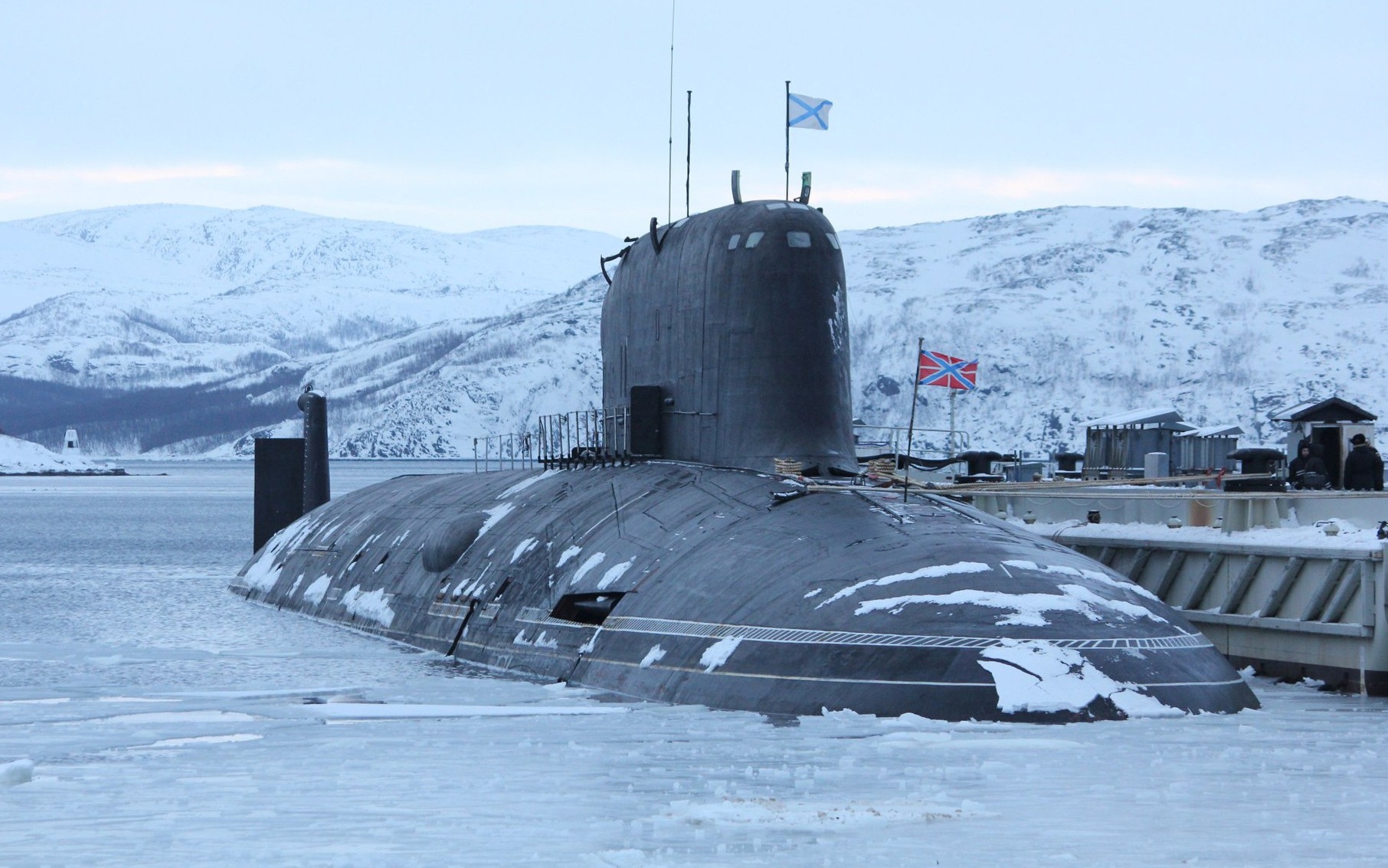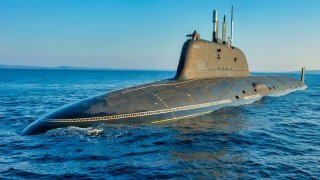Russia's Yasen-Class Submarines Make U.S. Navy Admirals Sweat
The Yasen-class nuclear-powered cruise missile submarines, also known as Project 885, represent a significant advancement in Russian naval technology and pose a substantial threat to the US Navy and NATO forces.
Summary and Key Points: The Yasen-class nuclear-powered cruise missile submarines, also known as Project 885, represent a significant advancement in Russian naval technology and pose a substantial threat to the US Navy and NATO forces.

-Designed by the Malakhit Marine Engineering Bureau and built by Sevmash, these submarines are intended to replace the aging Akula-class and Oscar-class submarines.
-Despite their advanced capabilities, including a variety of cruise missiles and torpedoes, the Yasen-class submarines are more expensive, complex, and potentially less reliable than their predecessors.
-Additionally, the current geopolitical landscape might lead Russia to consider exporting these sophisticated submarines to its allies, further challenging Western naval dominance.
Yasen-Class Submarines: Russia's New Threat to NATO
If there are two truths to know about the Russian military’s capabilities it is this: Russia is not—and never has been—a great naval power. Its strengths have always been on land.
Yet, the Russians have long aspired (since Peter the Great) to become a maritime force. And, secondly, if there is one capability that the Russian Navy has honed into a real threat to the maritime democracies of the West, it is the Russian submarine force.
Moscow has always been very competitive in producing submarines that can truly challenge the naval capabilities of America, Britain, and the other members of the NATO alliance.
Russia’s Yasen-class submarine, also known in Russia as “Project 885,” is a nuclear-powered cruise missile submarine that represents a significant advancement in Russian naval technology.
Designed by the Malakhit Marine Engineering Bureau and built by Sevmash, the Yasen-class submarines are intended to replace the aging Akula-class and Oscar-class submarines in the Russian Navy’s fleet.
Specifications
The Yasen-class submarine has a displacement of 8,600 tons when surfaced and 13,800 tons when submerged. It measures 120 meters in length and has a beam of 15 meters. The submarine is powered by a single KPM type pressurized water reactor, which provides it with a top speed of 20 knots on the surface and 28 knots submerged.
The Yasen-class has a maximum diving depth of 600 meters and a crew complement of 90.
Capabilities
Russia’s Project 885 Yasen-class submarine is equipped with a variety of advanced weapons systems meant for challenging the NATO alliance at sea. These include 24 vertical launch tubes for various cruise missiles, such as the P-800 Oniks, which has a range of about 300 kilometers. The submarine also has eight 650-mm torpedo tubes for torpedoes and anti-ship missiles.
Additionally, the Yasen-class is fitted with the Russian equivalent of the US Navy’s Tomahawk cruise missile, known as the Granat, which has a firing range of up to 3,000 kilometers and can carry a nuclear warhead.
This sub can pack quite a wallop.
Some Drawbacks for Yasen-Class
As with all manmade systems, notably in the modern age, its designers clearly believed that complexity kills the enemy. But, as Western weapons systems in the modern age have shown us ad nauseum, complexity can just as easily kill the military embracing the new system as much as it can kill the enemy.
Let us not forget the fact that Russia’s Navy has been one of the hardest hit elements of the Russian military since the Ukraine War began.
That is ironic, considering that the bulk of the fighting in Ukraine is being done on the ground and in the air above the country. The maritime domain is ancillary. Yet, that is where the Ukrainians have scored some major hits against Russia. In that way, then, the Yasen-class submarines, which are designed to operate near enemy shores and launch strikes against targets using its cruise missiles, might just itself become a tempting target for Russia’s enemies.

Whereas before the 21st century, the Russians usually preferred a “good enough” model of weapons systems and vehicle designs—meaning the simpler, the better—ever since the 2000s came about, and Russia started to recover from its post-Soviet doldrums of the 1990s, Russian designers have started mirroring the mistaken ways of their Western rivals.
We see this dangerous pattern (for Russia, although it is fortuitous for Russia’s enemies), play out repeatedly throughout the Russian military today. For example, I’ve written extensively on the relative simplicity of the older T-72 Main Battle Tank (MBT) and its incredible successes in combat against the NATO-backed Ukrainians compared to the abject failures of more complex Russian MBTs, such as the T-90M or the much-ballyhooed T-14 Armata.
Similarly, the Yasen-class submarine has significant drawbacks compared to either the Akula-class or Oscar-class it is meant to replace.
First of all, it is more expensive than those systems (meaning that the Russians will be unable to produce as many units of this type as it can the others, especially the Akula-class). The Project 885 Yasen submarine’s large size and complexity make it more difficult to operate, too, and costlier to maintain than older subs that are smaller and less advanced.
Plus, the Yasen-class submarine is a relatively new system, and there is likely going to be unforeseen issues that arise over the course of its service to the Russian Navy. So, the Yasen-class certainly continues the Russian tradition of building powerful and threatening submarines to challenge the dominance of the Western navies. At the same time, though, it is a new class of submarine that could bring with it unwanted complications along with its increased complexity and higher cost.
Threats to the US Navy and NATO
This new submarine class poses a significant threat to the US Navy and NATO navies due to its advanced capabilities and firepower. The submarine’s ability to launch a wide array of cruise missiles and torpedoes makes it a formidable opponent in both anti-ship and land-attack missions.
The Yasen-class’s advanced sonar and stealth technology make it difficult to detect and track, giving it a significant advantage in undersea warfare.
An Exportable Model?
Russia is known as the arms bazaar of the world. Russian weapons, such as the T-72 MBT, or the AK-47, or the Kilo-class submarine are all ubiquitous around the world—notably throughout the Developing World (the Global South, where Russia sells most of its weapon wares). In fact, these weapons sales have sustained the Russian economy for decades, notably in the wake of the collapse of the Soviet Union.
As my late friend (and former Soviet defector to the United States), Yuri Maltsev loved pointing out, “the number one industry in Russia today is the arms industry whereas the number one industry in the United States is the healthcare industry” (Yuri used this figure as a means of saluting the greatness of America, his adopted homeland, over his native land of Russia).
And as the global economy becomes increasingly divided over political differences, as Russia needs to continue moving its economy along in the face of tough Western sanctions, the Russians might start looking to export this very dangerous—though costly—system to its allies.
Currently, there are no plans to do so.
But Russia is participating in a global movement against the hegemony of the United States. Along with China, Iran, and a multiplicity of other Global South nations, Russia envisions itself as leading a global revolt against the perceived imperialism of the United States.
The danger is real that, for both economic and strategic purposes, Russia might start selling these sophisticated subs to other countries that could further challenge the Americans at sea, as Moscow has sold almost every other weapon system it has developed over the years. While scaling up production might be hard for Moscow due to industrial capacity issues brought on by the Ukraine war, the threat remains.
A Significant Threat
The Yasen-class submarine, while it may have limitations, poses a significant and growing threat to American and NATO navies. It represents real advancement in Russian naval technology, too. If it is used in conditions favoring Russia—such as in the tight quarters of the Baltic Sea—these submarines might prove useful to the Russians.
About the Author
Brandon J. Weichert, a National Interest national security analyst, is a former Congressional staffer and geopolitical analyst who is a contributor at The Washington Times, the Asia Times, and The-Pipeline. He is the author of Winning Space: How America Remains a Superpower, Biohacked: China’s Race to Control Life, and The Shadow War: Iran’s Quest for Supremacy. His next book, A Disaster of Our Own Making: How the West Lost Ukraine, is due October 22 from Encounter Books. Weichert can be followed via Twitter @WeTheBrandon.
All images are Creative Commons.
From The Vault


